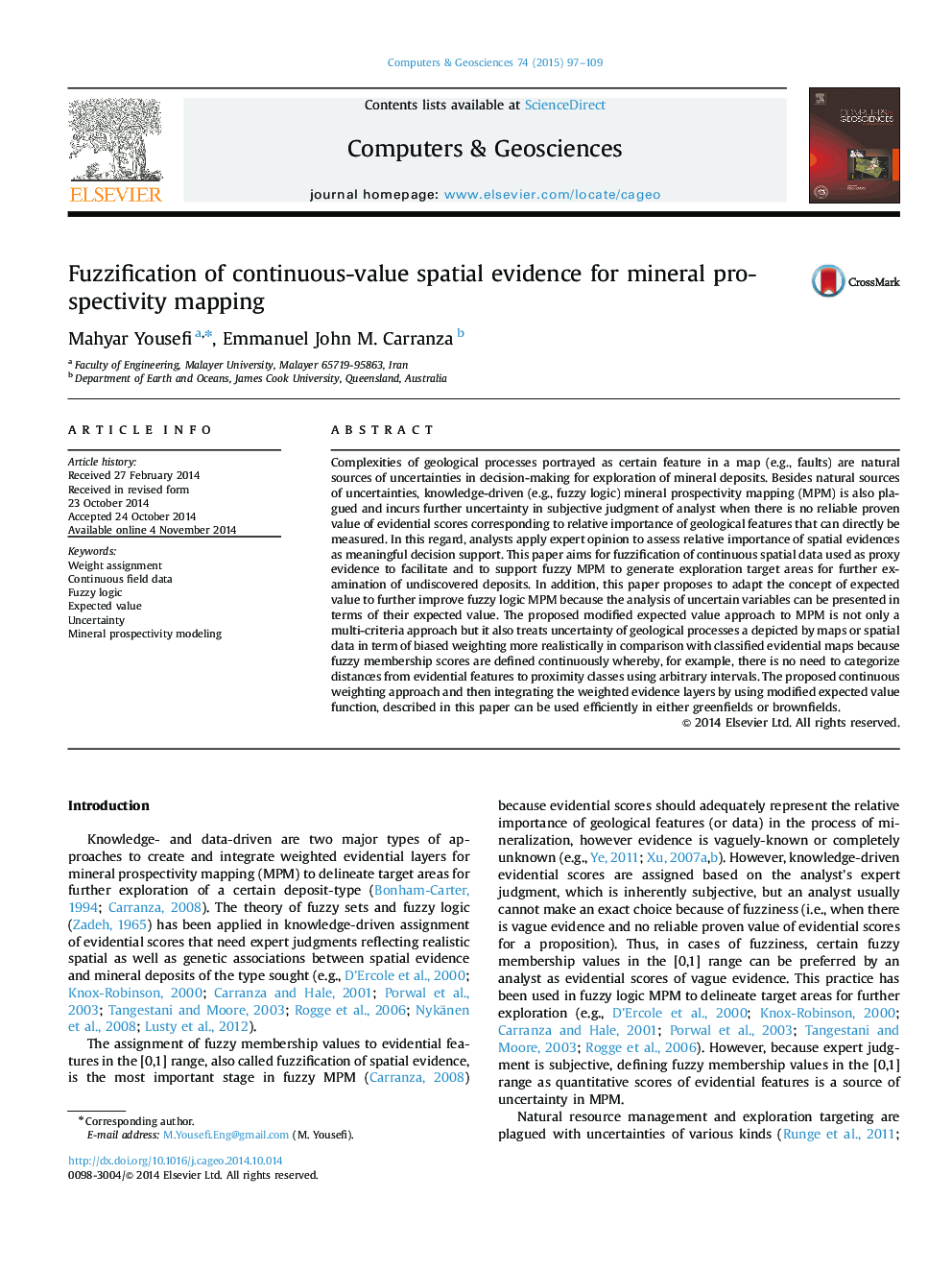| Article ID | Journal | Published Year | Pages | File Type |
|---|---|---|---|---|
| 506939 | Computers & Geosciences | 2015 | 13 Pages |
•Fuzzy evidential scores are assigned by using logistic function.•A modified expected value approach is proposed as well.•The modified expected value approach treats uncertainty of mapped geological features.
Complexities of geological processes portrayed as certain feature in a map (e.g., faults) are natural sources of uncertainties in decision-making for exploration of mineral deposits. Besides natural sources of uncertainties, knowledge-driven (e.g., fuzzy logic) mineral prospectivity mapping (MPM) is also plagued and incurs further uncertainty in subjective judgment of analyst when there is no reliable proven value of evidential scores corresponding to relative importance of geological features that can directly be measured. In this regard, analysts apply expert opinion to assess relative importance of spatial evidences as meaningful decision support. This paper aims for fuzzification of continuous spatial data used as proxy evidence to facilitate and to support fuzzy MPM to generate exploration target areas for further examination of undiscovered deposits. In addition, this paper proposes to adapt the concept of expected value to further improve fuzzy logic MPM because the analysis of uncertain variables can be presented in terms of their expected value. The proposed modified expected value approach to MPM is not only a multi-criteria approach but it also treats uncertainty of geological processes a depicted by maps or spatial data in term of biased weighting more realistically in comparison with classified evidential maps because fuzzy membership scores are defined continuously whereby, for example, there is no need to categorize distances from evidential features to proximity classes using arbitrary intervals. The proposed continuous weighting approach and then integrating the weighted evidence layers by using modified expected value function, described in this paper can be used efficiently in either greenfields or brownfields.
